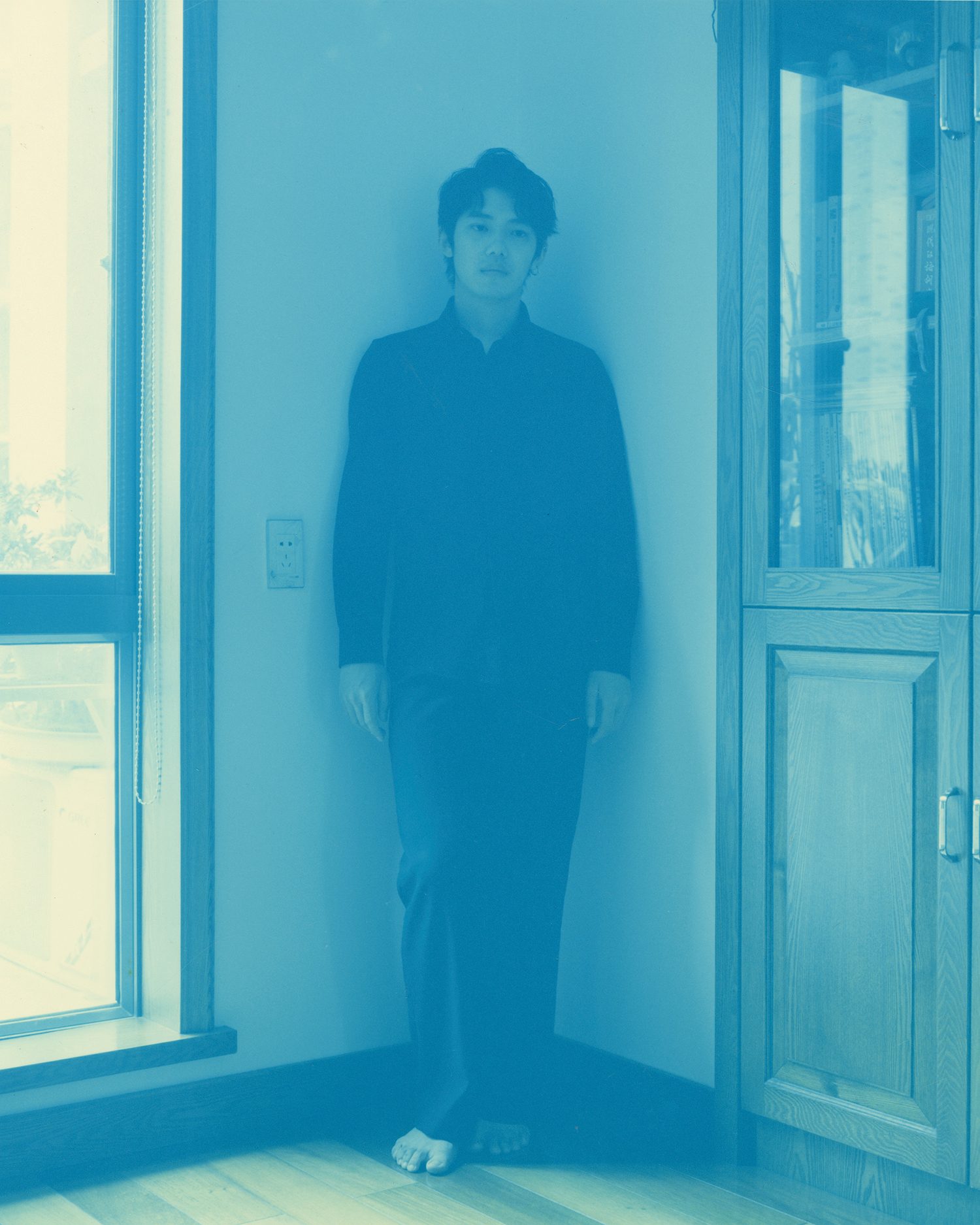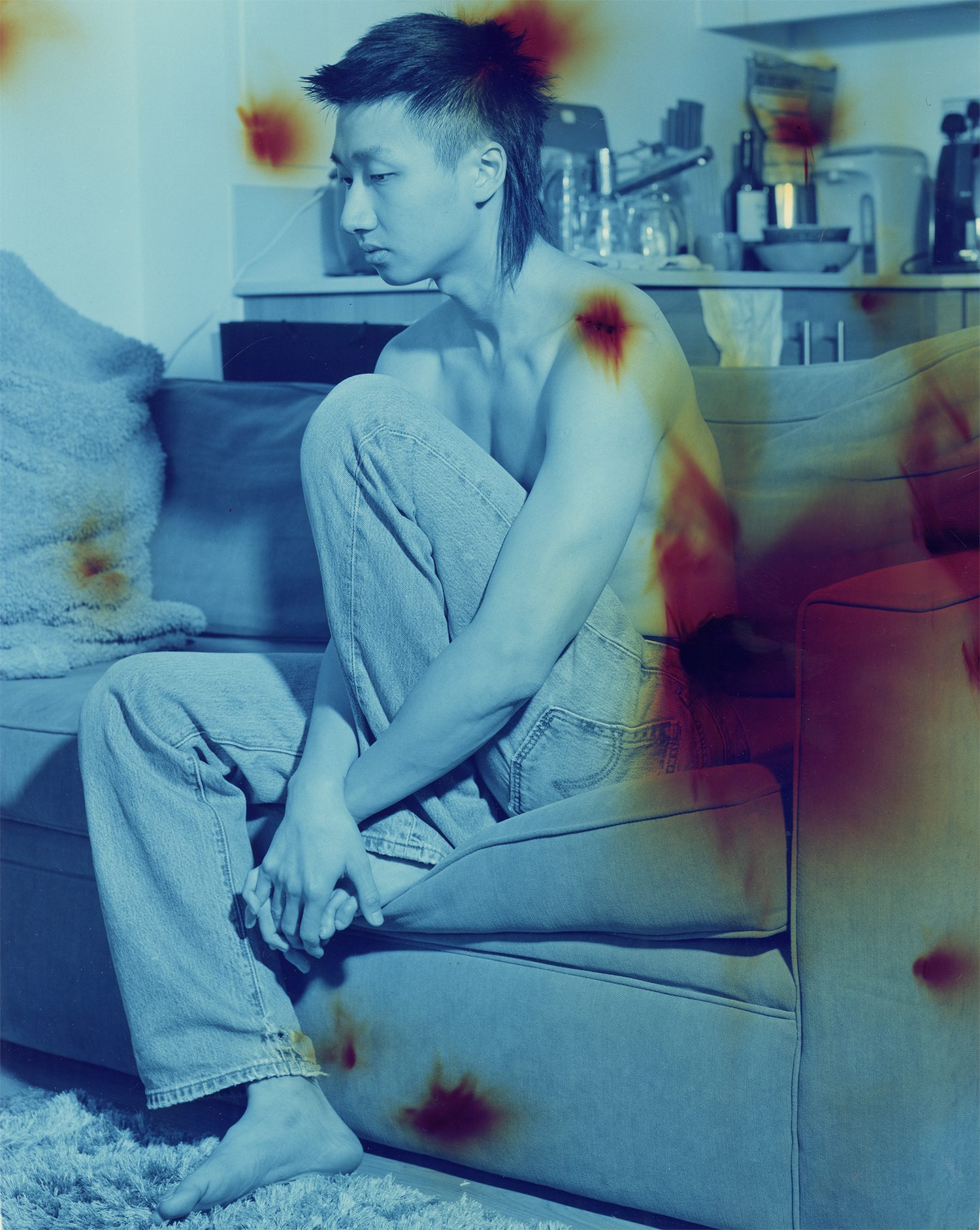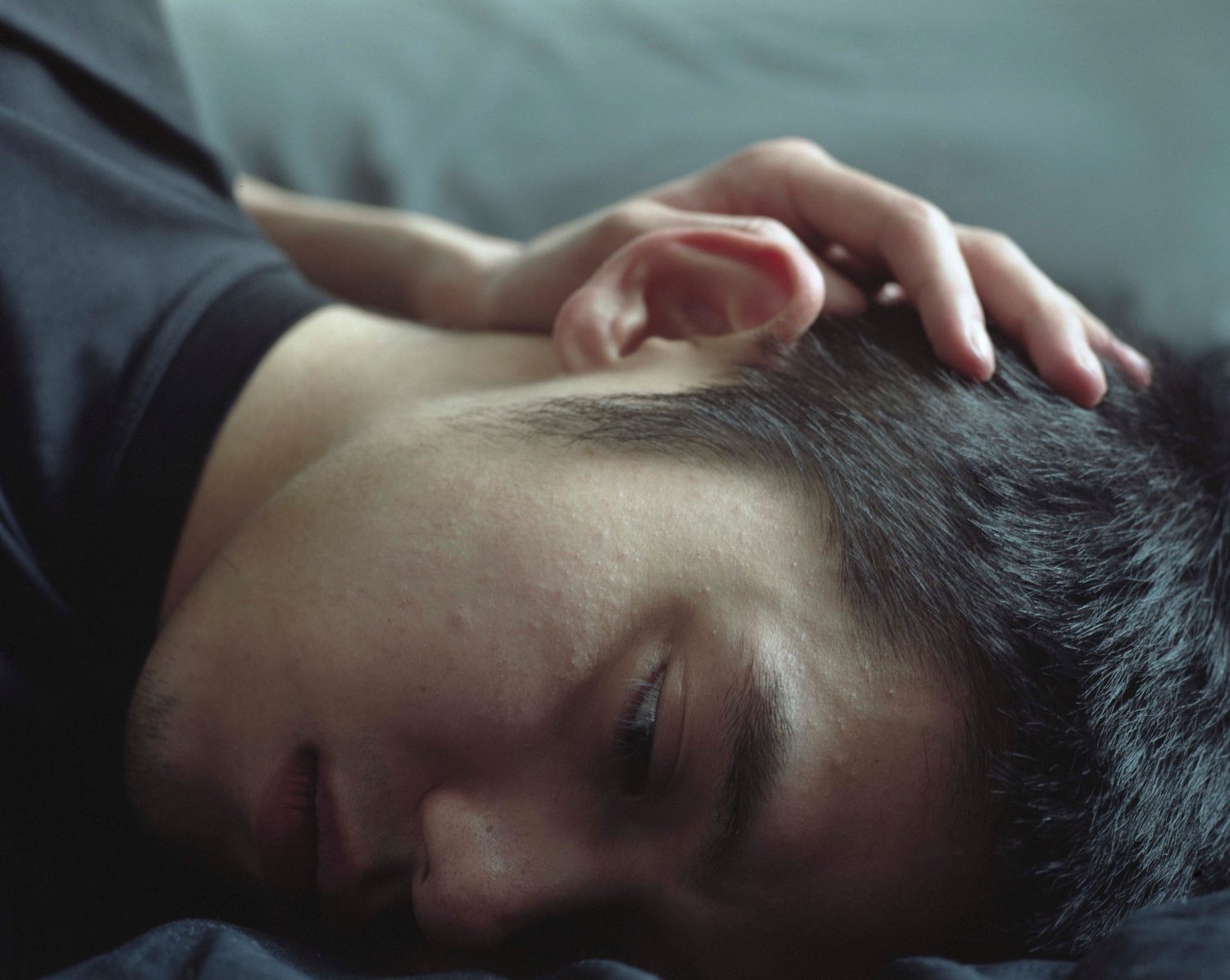Chinese photographer Bowei Yang grew up in a traditional Christian family in a small and picturesque town on the Fuchun River in southern China. It was an intensely religious upbringing, he says, and one he struggled with as he tried to find his own identity. “Growing up in a Christian family put me in a kind of dilemma where I was constantly conscious of my ‘different’ sexual orientation,” he remembers. “Then, from the age of 15, I was compelled to accept psychological treatment when I first told my parents about the ‘sin.’” As a photo-based queer artist, those formative experiences stuck to him like glue, shaped him, and “pondering the predicaments of young queer people combined with a sense of nostalgia, the Oedipus complex, and the relationship with collective trauma” became his whole basis for making art.

Born in 1994, Yang wasn’t all that interested in photography to begin with. Or, more specifically, he had felt suspicious of its uses as far back as he could remember. This came from seeing his grandfather work as a photojournalist, and realizing how complicated the notion of ‘truth’ really is. “At that time I really didn’t like the pattern of how my grandpa worked—making fake press images by setting up totally fictional scenes and photographing them for the local newspaper,” he says. “It made me doubt the line between what is real and what is not from a very young age.” It wouldn’t be until high school, in fact, when Yang was introduced to the work of James Nachtwey and Ingmar Bergman, that he began to see the potential of the camera beyond what he’d understood so far. From there he was hooked, and he went on to study photography at the Beijing Film Academy before moving to London to attend the Royal College of Art, which he graduated from earlier this year.

Despite his complicated history, Yang says that his personal identity is only a part of what informs his practice now, and that actually his own experiences are more useful as a springboard to find out about other people’s lives. “What I am really interested in is how to construct a more common collective identity by composing different individuals in a narrative way. While I seek self-reflection in my work, I am also attempting to penetrate a deeper layer of other people’s psychic worlds,” he says. “I am trying to construct a vague self-portrait by facing the vulnerability of others, accompanied by performances and staged scenes.”
In his project If Spring Could Feel Ache, for instance, he turns his attention to visualizing the collective ‘wounds’ and ‘sorrows’ of teenage life, especially for those with self-doubt and queries about their own sexuality, or those who use rebellion to build their identities—adolescent boys like him, in other words, who are just trying to find their way. Moving between the idea of individual bodies and one body (as in, the collective body of humanity) the images in this series detail touching impressions of young men he knows—“my friends,” he says, “gays and straights, each one of whom I tried to discover the softest part of through the image”—focusing on the quiet moments of their existences, parts of their bodies, their skin, them sleeping, all in a hazy spectrum of hues.

In order to enact the idea of wounds upon the photographs, he then played around in the color darkroom, adding what look like blisters and bruises to their surfaces. The work exudes a lot of dark, inky tones in particular too, which Yang describes as deeply symbolic. “In ancient Chinese culture, black stands for the color of water,” he says, “and that feeling of moistness and asphyxia is part of the atmosphere I try to build.”
In another of his projects, Soft Thorn, that same cool color palette stretches into a larger collection of images of young men. This time, however, the photographs are less abstract, featuring portraits of Yang’s sitters immersed amidst nature, on park benches, among flowers, but also at home, continuing the thread of solitude and contemplation that permeated If Spring Could Feel Ache. In Soft Thorn, hands recur often, cradling faces, clasped together, holding things.

Alongside this, there are heavily symbolic scenes interspersed—stones bound together with string, butterflies encased behind glass, fruit glowing out of the darkness in a piercing slice of afternoon light. These natural objects call up nostalgic feelings that are important to our reception of the work, Yang says. “From my perspective, each rock is different to the next, the same as trees… and similarly that’s why I like to use butterflies a lot in my images too. They all symbolically stand for individualism, while belonging to a certain collective cognition at the same time. Projecting feelings onto objects is crucial in my narratives, and photographs allow viewers to gaze at them and experience these allegorical details in their own ways.”

Soft Thorn initially began as a record of a journey into nostalgia that Yang experienced after he had departed his home for London, and so it features a mix of both candid and staged portraits shot against the backdrop of his hometown. “Inspired by Alain Robbe-Grillet’s Voyeur, which describes fiction as a subtle view instead of a subjective view, it occurred to me that I could accomplish a description of myself and a self-portrait through directed portraits of others,” he says, echoing his motivations for making If Spring Could Feel Ache. “As the models I use are mainly my close queer friends and Christian relatives, I am prone to performing my own sentiments and sorrows, capturing myself in the portraits of people I share intimate relationships with. In the portraits in Soft Thorn, I try to reveal and rebuild the mental world of the people photographed by posing and directing their gestures in an intimate way. I emphasize the similarity between portraits while stripping off individual and specific characteristics by directing my models.”

Continuing the thread of fiction, Yang was inspired by A Dream of Red Mansions when creating Soft Thorn—one of Chinese literature’s four great classic novels, written in the 18th Century. “It really made its mark on me, with its fabulous depiction of all sorts of dreams mixed with bittersweet stories. It provided me with ideas to structure my dream world in reality, through my artworks—a way of releasing it out into the world, like the vulnerable butterfly trying to escape from the shadow of dark clouds,” he says thoughtfully. And in the end, he adds, Soft Thorn is exactly that—an exercise in symbolism and fantasy, dreamworlds and real life, and how to tell a personal story that somehow, anyone could find themselves in.
Now based in Hangzhou, China, Yang is in the process of setting up a studio where he can continue making his contemplative and moving portraits. Playing with the potential of images to translate emotional states to the view, he currently prefers a minimal amount of construction in his practice. “I regard my portrait work as a kind of ‘libido container,’” he says. “It allows people to project their own experiences, and leads the viewer towards those staged and allegorical scenes in the project, like an open gate, inviting them in.”

















